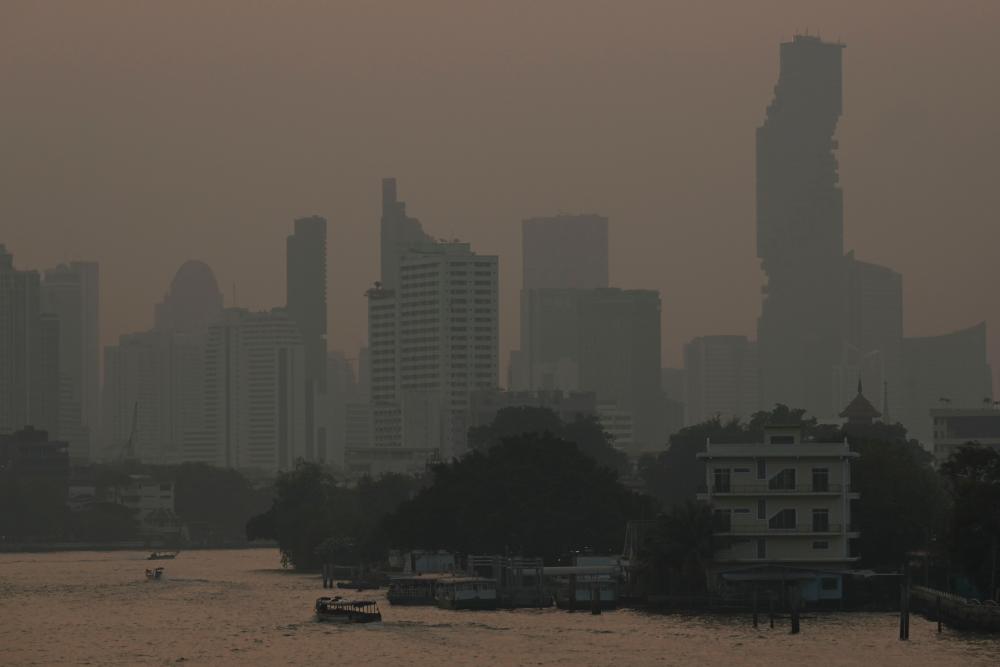BANGKOK: A smoky haze continues to blanket Bangkok, while 66 provinces in Thailand were shrouded with unsafe levels of PM2.5 (particulate matter less than 2.5 micrometres) on Thursday.
The situation has worsened with the number of hotspots caused by active burning increasing to a staggering 1,712.
The air monitoring website IQAir ranked Bangkok among the list of top 10 most polluted cities in the world today.
The Geo-Informatics and Space Technology Development Agency (Gistda) detected 546 hotspots in protected forests, 506 in national reserve forests, 278 in agricultural areas, 195 in community and other areas, 159 in Agricultural Reform Lands, and 28 along highways.
Kanchanaburi province had the highest number of hotspots, totaling 328.
Gistda detected 66 provinces in Thailand were shrouded with unsafe levels of PM 2.5 as at 8 am today, with Bangkok having the worst level at 187.3 microgrammes per cubic metre (µg/m³).
In Bangkok, the average level of PM2.5 was between 51.6 and 82.6 µg/m³, as of 2 pm (local time) Thursday.
The government’s safe threshold is at PM2.5 is 37.5 µg/m³, while the World Health Organization (WHO) guidelines recommend 25 µg/m³.
Meanwhile, Prime Minister Srettha Thavisin said crop burning was among the factors that contributed to the deterioration of air quality in the kingdom.
He suggested that the Bangkok Metropolitan Administration (BMA) implement measures including a temporary ban on construction activities within its jurisdiction, alongside a two-day work-from-home policy starting Thursday.
For long-term measures, he said there is a need to restrict the number of diesel-fueled vehicles in the inner circle of the city, as well as promote the use of electric vehicles to reduce emissions from vehicle exhaust pipes.
Meanwhile, Somkuan Tonjan, director of the Central Weather Forecast office of the Meteorological Department said Bangkok’s high PM2.5 levels are attributed to stagnant air, compounded by a very light southeasterly breeze, causing dust to mix with humidity, as reported by Thai PBS.
Somkuan added that an increase in hotspots in Cambodia and Myanmar is also contributing to the high PM2.5 levels.
Gistda data also showed a significant number of hotspots in Thailand’s neighbouring countries, with Cambodia recording 2,591 , Myanmar 1,844 , Laos 900 and Vietnam 185. - Bernama









